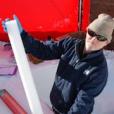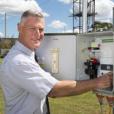
Senior Scientist – THz Beamline
Role at ANSTO
Research that matters
Sydney

Instrument scientist
Role at ANSTO

Isotope Ecologist
Role at ANSTO

Accelerator Physicist
Role at ANSTO
Stop Motion Animation Workshop
Sydney
Stop Motion Animation Workshop
Sydney

Principal Research Scientist
Role at ANSTO
Sydney

Distinguished Research Scientist
Role at ANSTO

Professional Officer
Role at ANSTO
Sydney

Leader, Nuclear Fuel Cycle Research
Role at ANSTO
Archive of ANSTO research publications, seminars and short talks.

Kookaburra (Ultra-Small-Angle Neutron Scattering)
Role at ANSTO
On the 10th of October 2025, the Minister for Industry, Science and Technology provided his Statement of Expectations to ANSTO.

Physicist Accelerator Scientist
Dr Klaus Wilcken is an accelerator mass spectrometry scientist at the Centre for Accelerator Science (CAS) with over 12 years of experience with suite of AMS isotopes & techniques.

Instrument Scientist
Role at ANSTO
ANSTO waste management services meet regulatory requirements and international best practice standards.
In this top secret mission, you program your EV3 to complete several space challenges. As this is a beginners’ course, our facilitator can adjust the programming from simple to advance throughout the day.
Sydney
Pagination













